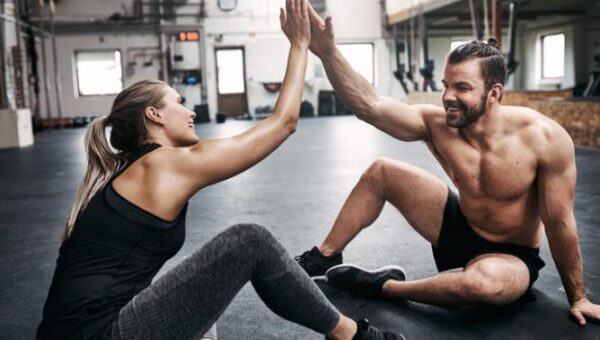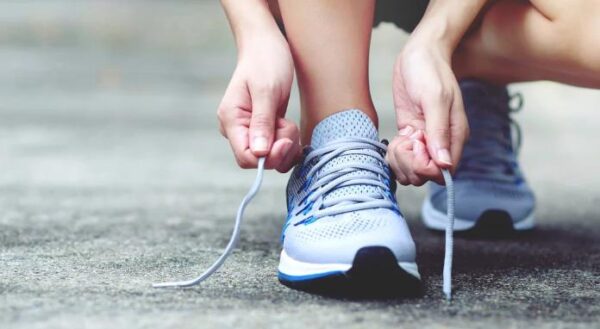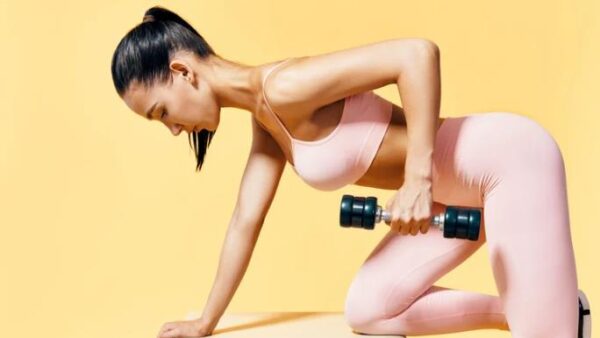Are you torn between satisfying your hunger and hitting the gym? Wondering how long you should wait after eating before lacing up your sneakers for a workout? You’re not alone! The timing of your pre-exercise meal can significantly impact your performance and overall well-being. Let’s dive into the world of digestion, exercise, and optimal fueling strategies to find out just how long after eating you should exercise for maximum benefits.
What Can Happen if I Eat Right Before My Workout?
Eating right before a workout can stir up a storm in your stomach, leading to various gastrointestinal issues. From pesky acid reflux and uncomfortable bloating to unwelcome nausea and even diarrhea, the aftermath of exercising on a full stomach can be far from pleasant.

In addition to physical discomfort, consuming food just before hitting the gym may also leave you feeling drained and sluggish during your workout session. This post-meal fatigue phenomenon, often dubbed a “food coma,” has puzzled scientists for years. One popular theory suggests that blood flow shifts from the brain to aid digestion after eating, while others point towards hormone release or blood sugar fluctuations as culprits behind this energy slump.
Moreover, indulging in sugary treats or refined carbohydrates pre-workout can send your blood sugar levels on a rollercoaster ride. The rapid spike and subsequent crash in glucose levels triggered by these foods can swiftly zap your energy reserves, leaving you fatigued and worn out before breaking a sweat.
Side Effects of Eating Close to a Workout
Understanding Digestion and Exercise
Have you ever wondered what happens to the food you eat before it turns into energy for your workout? Well, let’s break it down. When you sit down for a meal, your body goes into full digestion mode. It starts breaking down that burger or salad into essential nutrients like carbohydrates, proteins, and fats. This process is crucial because these nutrients are what fuel your muscles during exercise.
Depending on what and how much you eat, digestion can take anywhere from a couple of hours to several hours. For example, simple carbs like fruits digest quickly, providing a burst of energy. On the other hand, complex carbs like whole grains take longer to break down but offer sustained energy over time.
Impact of Digestive Processes on Exercise
When your stomach is full, it’s like trying to run a marathon with weights strapped to your ankles – not exactly the recipe for a successful workout. Your body is busy breaking down that burger or salad you just ate, sending blood rushing to aid in digestion.
This diversion of blood flow means less oxygen and nutrients reach your hard-working muscles when you need them most during exercise. It’s like asking your digestive system to multitask while expecting peak performance from your muscles simultaneously – a tough balancing act for your body.

When it comes to timing your exercise after eating, several key factors come into play. The size of your meal matters – a heavier meal will naturally take longer to digest than a light snack.
Consider the composition of what you’ve eaten as well. Protein, carbohydrates, and fats all have different digestion rates and can impact how quickly you feel ready to work out.
Your individual digestive system speed is unique to you. Some people may process food faster, while others might need more time before feeling comfortable engaging in physical activity.
It’s essential to listen to your body and understand how different meals affect your energy levels and workout performance. Experiment with timing and meal choices to find what works best for you on an individual level.
How Long Should You Wait to Exercise After Eating?
We consulted with our expert nutritionists on the question, “how long should you wait to exercise after eating?” They emphasized that the optimal wait time depends on the type and amount of food consumed.
Here are some general guidelines:
After a full meal: You may have to wait at least 2 to 3 hours
After a snack: You may have to wait at least 30 to 60 minutes
The timing can be tricky because different macronutrients digest at different rates. Protein and fat take longer to digest than simple carbohydrates. So, it’s important to consider both the timing and the type of food when planning your pre-workout meal.
Simple carbs are usually digested within 30 to 60 minutes, protein within 60 to 90 minutes, and fat within 90 to 120 minutes, according to nutritionist Jane Doe.
For a full, balanced meal, like an egg sandwich with a side of berry-topped yogurt or a grain bowl with chicken, brown rice, grilled vegetables, and avocado, your body needs about 2 to 3 hours to digest.
“If you food was particularly high in fat or heavy, you may need even more time to digest the food. Better pay attention to how you feel. If you still feel full, give yourself more time before starting your exercise. Everyone is different,” explains nutritionist John Smith.
How Long Should You Wait for Different Types of Exercise?
The time needed to avoid digestive issues after eating before exercising varies among individuals and the type of physical activity.
Although specific guidelines are limited, here are some general recommendations:
- Cross-country skiing: Wait 30 minutes after a snack or 1–2 hours after a meal.
- Crossfit: Wait 30 minutes after a snack or 1.5–3 hours after a meal.
- Cycling: Wait 30 minutes after a snack or 1.5–3 hours after a meal.
- Downhill skiing: Wait 15–30 minutes after a snack or 1 hour after a meal.
- Golfing: Wait 15–30 minutes after a snack or 1 hour after a meal.
- Mountain biking: Wait 30 minutes after a snack or 1–2 hours after a meal.
- Running: Wait 30 minutes after a snack or 1.5–3 hours after a meal.
- Swimming: Wait 30 minutes after a snack or 1.5–3 hours after a meal.
- Walking: Minimal time needed after a snack or meal.
- Weight training: Wait 30 minutes after a snack or 1–2 hours after a meal.
Effects of Exercising on a Full Stomach
Exercising with a full stomach can throw a wrench into your workout plans. Picture this: you’re trying to crush that cardio session, but all you can think about is the uncomfortable feeling in your belly. Bloating and nausea may start creeping in, making it hard to focus on breaking a sweat.
When your body is busy digesting a big meal, it struggles to divert energy efficiently towards powering your muscles during exercise. It’s like asking it to multitask when all it wants to do is concentrate on processing those nutrients from your last meal.
Feeling sluggish and not quite at the top of your game while working out after eating might be more common than you think. Your body needs time and space to digest properly before diving headfirst into physical activity; otherwise, you risk compromising both digestion and workout performance.
Types of Exercise Suitable After Eating

After a satisfying meal, it’s important to choose the right type of exercise to avoid any discomfort. Opting for lighter, lower-intensity activities like walking can be beneficial. Taking a leisurely stroll not only helps with digestion but also allows you to enjoy some fresh air and clear your mind.
Yoga is another excellent option post-meal. Its gentle movements can aid in digestion by massaging the internal organs and promoting better blood circulation. The meditative aspect of yoga can also help you relax and unwind after eating.
If you’re not into walking or yoga, consider engaging in some gentle stretching exercises. Stretching can help release tension in your muscles while giving your body a chance to digest food more efficiently. It’s a low-impact way to keep your body moving without putting too much strain on your stomach.
Pre-Exercise Meal Strategies – Foods to Eat Before Working Out
Pre-workout nutrition is crucial for fueling your exercise and enhancing your performance and recovery. The ideal meal or snack before exercising depends on factors like how your body digests foods, as well as the duration and intensity of your workout.
Here are some general guidelines:
Timing: If you’re eating 3 to 4 hours before a moderate-intensity, hour-long workout, aim for a balanced meal with:
- Complex carbohydrates (whole grains, beans, vegetables) for sustained energy.
- Protein (lean meats, fish, dairy, beans) for muscle growth and recovery.
- Healthy fats (nuts, seeds, fish) for overall nutrition.
Snacks: If you’re exercising within 4 hours of your last meal, have a light snack 30 to 60 minutes before your workout. A good combination includes carbs and a little protein, such as:
- Apple slices with peanut butter
- Greek yogurt with berries
- Hummus and pita bread
Longer workouts: For workouts longer than 60 minutes at a moderate or high intensity, consider extra carbs to sustain energy. Opt for easy-to-digest carbs, such as:
- Toast with peanut butter
- Half a banana with almond butter
- An energy bar
Hydration: Remember to drink water for proper hydration before, during, and after your workout. Energy gels can provide carbs during long workouts, but be cautious of sugar alcohols that may cause digestive issues.
Adjust your pre-workout nutrition based on your body’s response and the specific demands of your exercise routine.
Post-Exercise Nutrition Considerations
After pushing your limits during a workout, it’s crucial to refuel your body with the right nutrients. Consider indulging in a protein-packed smoothie filled with fruits and greens for a refreshing post-workout treat. The combination of protein and carbohydrates will help replenish your energy stores and kickstart muscle recovery.
If you’re craving something more substantial, opt for whole-grain toast topped with nut butter for a satisfying blend of healthy fats and carbs. This simple yet nutritious snack can provide the fuel your body needs to recover after exercise.
Alternatively, whip up a colorful salad loaded with lean proteins like grilled chicken or tofu. Adding veggies like spinach, bell peppers, and tomatoes not only boosts flavor but also provides essential vitamins and minerals to support overall health.
Listening to Your Body’s Signals

Listening to your body’s signals is crucial when it comes to determining the optimal timing for exercise after eating. Everyone’s digestive system works differently, so paying attention to how you feel during and after physical activity is key. If you experience discomfort, bloating, or sluggishness, it may be a sign that you need more time between your meal and workout.
On the flip side, if you feel energized and ready to move, that could indicate that your body has processed the food effectively and you’re good to go. Remember, there’s no one-size-fits-all approach when it comes to post-meal exercise timing. It’s all about finding what works best for *you*!
Experiment with different wait times between eating and working out, listen intently to how your body responds each time and make adjustments accordingly. By tuning in to your body’s cues, you’ll be able to create a personalized pre-exercise routine that sets you up for success every time.
What Kind of Food is a Not Good to Eat Before Working Out?
Proper nutrition before exercising can enhance your performance and prevent discomfort. Avoiding certain foods can help you feel your best during your workout.
Here are some foods to avoid before exercising and the reasons behind it:
| Foods to Avoid Before Exercising | Reason |
|---|---|
| Fiber-rich foods (whole grains, beans) | Slow digestion, potential discomfort |
| High-protein foods | Slow digestion, potential discomfort |
| Fatty foods (fatty meats, high-fat dairy) | Slow digestion, potential discomfort |
| Sugary foods (candy, sugary drinks) | Potential energy crash |
| Acidic foods (citrus fruits) | Potential heartburn or acid reflux |
| Spicy foods | Potential heartburn or acid reflux |
| Gas-producing foods (beans, lentils, certain vegetables) | Bloating and gas |
| Sugar alcohols (found in some energy bars and sugar-free foods) | Bloating and gas |
| Carbonated beverages | Potential bloating and discomfort |
| Caffeine | Potential dehydration |
| Alcohol | Potential dehydration |
Consulting with a Health Professional
When it comes to your health and well-being, seeking guidance from a healthcare professional or registered dietitian is crucial. These experts can provide personalized advice based on your unique medical conditions or dietary needs. Consulting with them before making any major changes to your exercise or eating routine ensures that you are taking the right steps toward achieving your goals safely and effectively.
Health professionals can offer valuable insights into how certain foods may interact with medications, impact pre-existing conditions, or affect your energy levels during workouts. By discussing your concerns and goals with a knowledgeable professional, you can create a plan that aligns with your individual needs and sets you up for success in reaching optimal health.
Remember, everyone’s body is different, so what works for one person may not work for another. Seeking expert guidance can help tailor recommendations specifically to you, leading to better outcomes in the long run.
FAQs about Exercise After Eating
1. Is it OK to exercise right after eating?
Absolutely! However, it’s generally recommended to wait at least 30 minutes to an hour after eating before engaging in vigorous exercise. This allows your body to begin digesting your meal and reduces the risk of discomfort or cramping during your workout.
2. Can I work out after 1 hour of eating?
Yes, exercising after 1 hour of eating is generally safe and can be beneficial. Waiting this amount of time allows for some digestion to occur, providing your body with the energy it needs to fuel your workout effectively.
3. Can I work out 5 minutes after eating?
While it’s technically possible to exercise 5 minutes after eating, it’s not ideal. Your body needs time to start digesting your meal, and exercising too soon after eating may lead to discomfort, cramping, or even nausea. It’s best to wait at least 30 minutes to an hour before working out.
4. Is it better to work out before or after a meal?
Both options have their benefits! Exercising before a meal can help boost metabolism and burn calories while working out after a meal can provide your body with the energy it needs to power through your workout. Ultimately, it comes down to personal preference and what feels best for your body. Experiment with both and see what works best for you!
